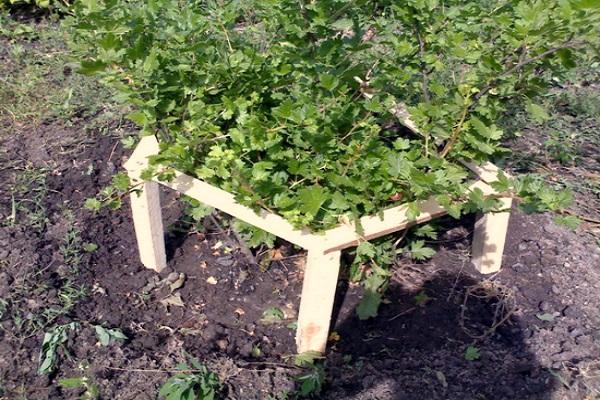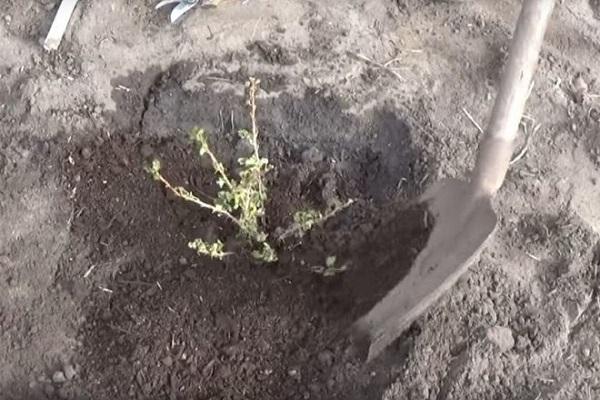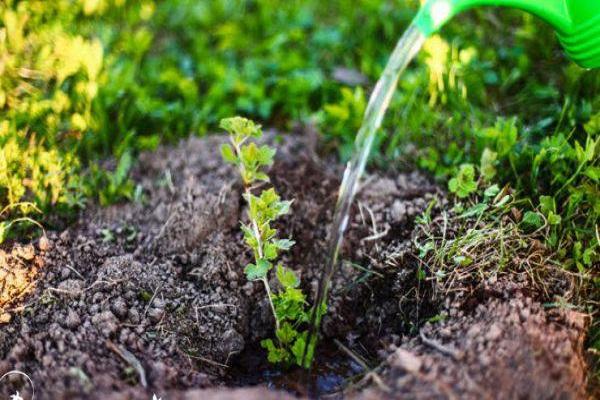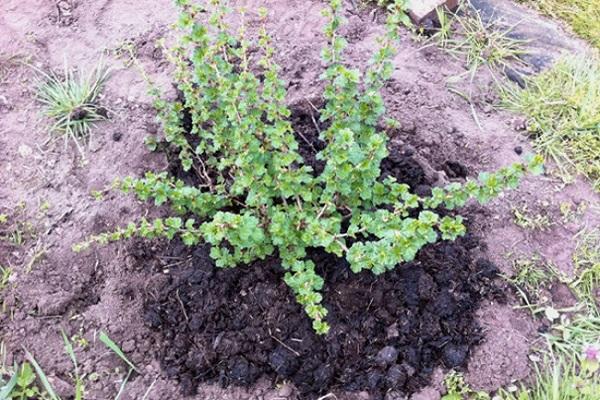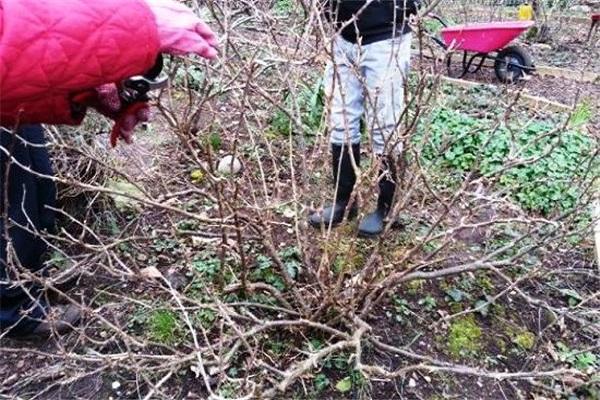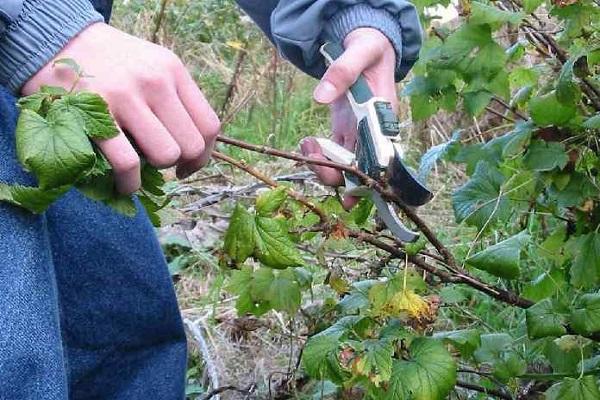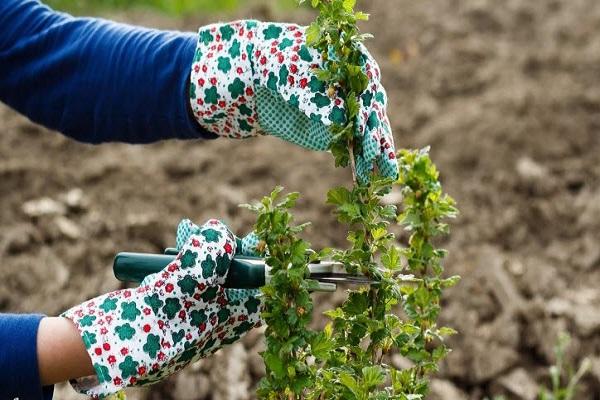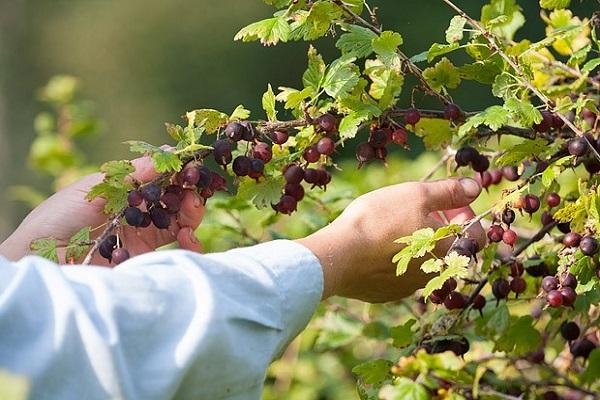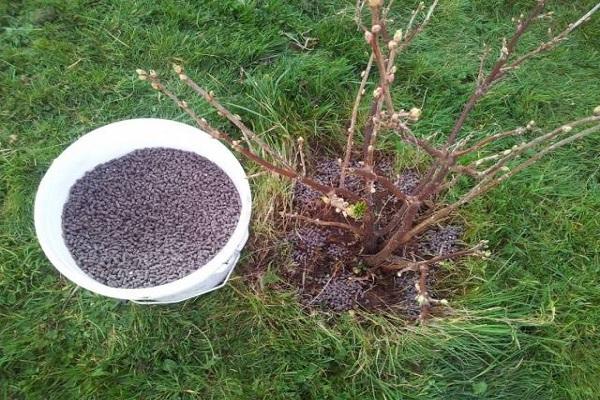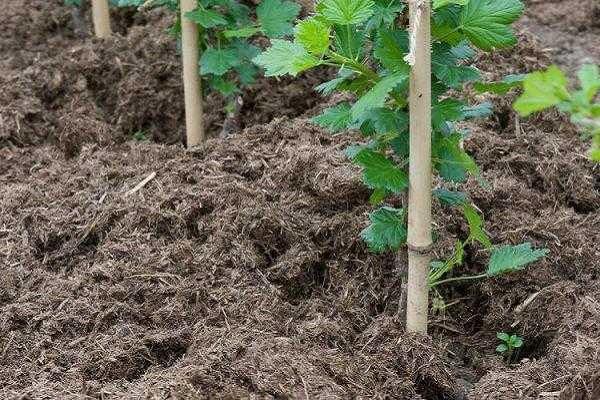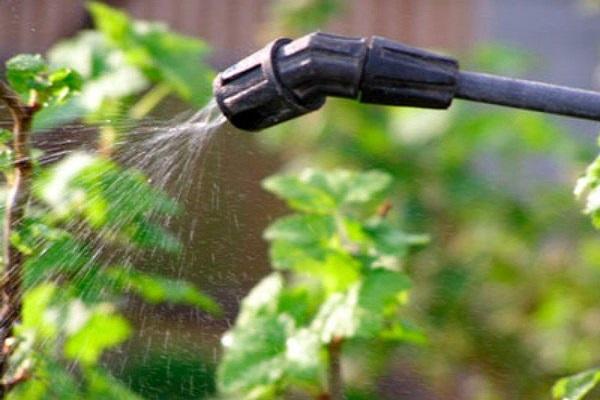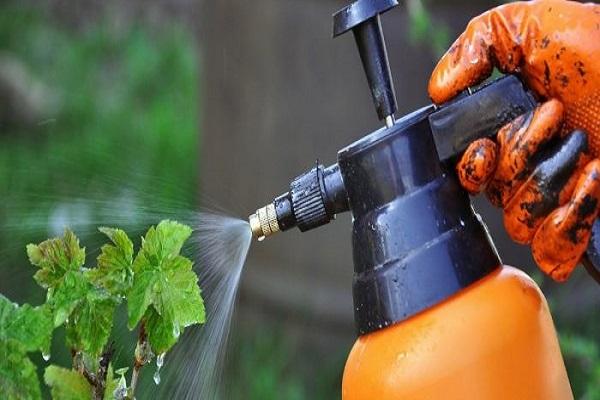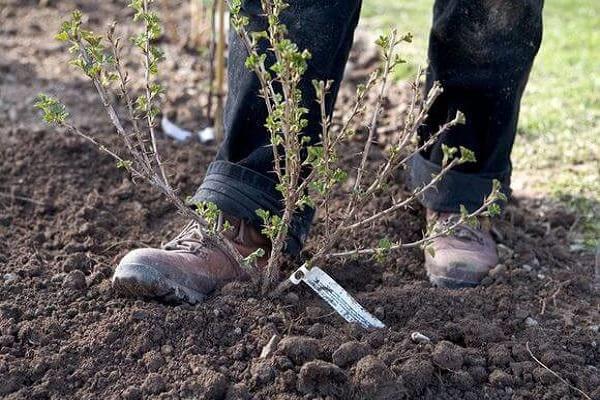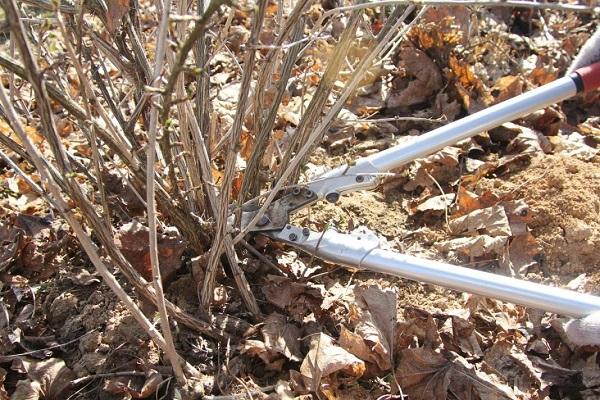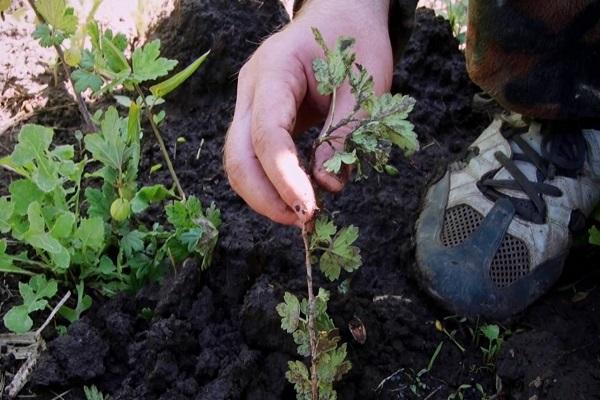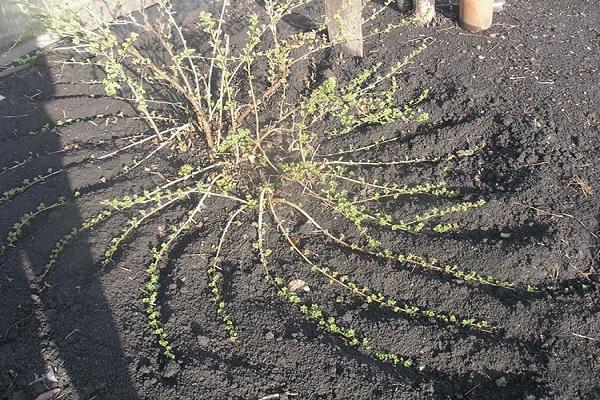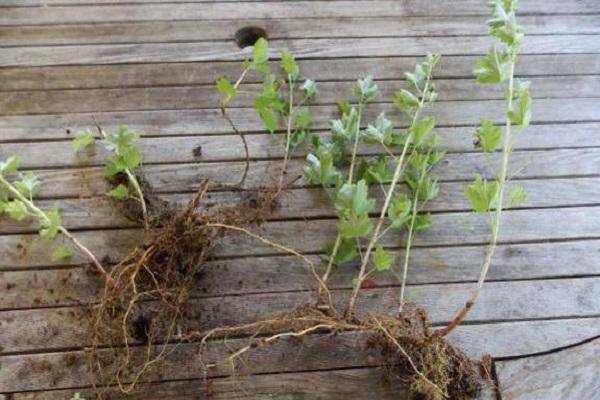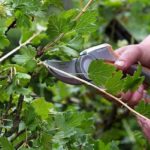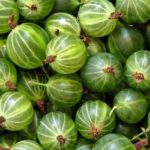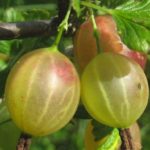Berry bushes are grown not only by summer residents; crops are grown on an industrial basis to produce a harvest of fruits rich in vitamins and organic acids. At the beginning of the last century, huge areas were occupied by gooseberries, but the number of plantings began to decrease sharply, the plants began to die from spherosis caused by microscopic fungi. And although varieties have now been created that are immune to powdery mildew, caring for gooseberry bushes has its own characteristics. Given certain requirements, you can harvest for 10–15 years.
- How to plant and grow gooseberries in the garden
- Scheme and timing of planting gooseberries
- Choosing the optimal location
- Preparing the soil and planting hole
- Technology of planting and rooting of young seedlings
- What does comprehensive care for gooseberry bushes include?
- Weed control
- Pruning and shaping bushes
- Regularity of plant irrigation
- Feeding and fertilizers
- Loosening the soil
- Pest treatment
- Nuances of caring for gooseberries during diseases
- Gooseberry gardening calendar
- Spring procedures
- Caring for bushes in summer
- Autumn work in the garden
- Preparing for winter
- Gooseberry propagation methods
- Dividing the bush
- Root shoots
- Reproduction by layering
- Horizontal layering
- Arc-shaped
- Vertical
- Basic mistakes in plant care: ways to prevent them
How to plant and grow gooseberries in the garden
Fruit bushes quickly take root, the next year the ovary is set and the berries are ripe, but in order to have a lot of them, you need to choose a variety adapted to specific climate conditions.
Scheme and timing of planting gooseberries
Place for fruit bushes is allocated in dachas and personal plots, where the land is cultivated not with a tractor, but by hand. The distance between gooseberry bushes is influenced by the number of shoots that are left during formation. Powerful plants with a large number of branches are planted every 1.6–2 m. If the interval in the row is 70 cm, the bushes are pruned more often, and no more than 3 new shoots are left every year.
In mid-latitudes in autumn, gooseberries are planted not in September, but in October. By winter, the young plant will have time to take root, accumulate nutrients, and begin to develop in the spring.
Choosing the optimal location
Gooseberries love the sun and grow in partial shade, but in this case they do not produce a good harvest. The shrub feels comfortable on chernozems and loams with neutral acidity; it does not tolerate:
- podzolic soil;
- heavy soil;
- sand.
It is advisable to protect seedlings from dry winds. Young bushes cannot withstand cold winds.
Preparing the soil and planting hole
To remove weeds, the area selected for gooseberries is sprayed with herbicides. To improve the structure of the soil, green manure in the form of mustard or grains is sown in advance. When digging the soil, humus is added, and garden lime is added to reduce acidity. To destroy fungal mycelium and pest larvae, the soil is treated with insecticides and drugs that kill the infection.
To plant gooseberries, in the fall, dig a hole 40 x 40 long and wide to a depth of 40 cm. Ash and half a kilogram of mineral fertilizers are poured into it, thoroughly mixing with the soil.
To prevent pests that can destroy the roots of the plant, organic matter is used if gooseberries are planted in the spring. But during this period, you need to have time to carry out the procedure before the kidneys wake up, but the ground must thaw. In autumn, branches are cut and cuttings 20 cm long are prepared.
Technology of planting and rooting of young seedlings
In spring, the shoots are placed in the garden using a slightly different pattern than for adult bushes. Having loosened the soil, fertilized before the beginning of winter, the cuttings are placed at an angle of 45° every 20 cm. The earth is compacted and covered with peat or humus with a layer of at least 50 mm. Even among summer residents who do not know how to plant gooseberries, young shoots take root normally and do not freeze if snow suddenly falls. After warming, the soil is loosened and the cuttings are carefully buried.
In recent years, planting gooseberries in open ground even in summer has become quite possible. Young bushes are packed in cardboard boxes or cellophane tubes along with soil.When buying such a container, you need to pay attention to how the soil clod separates. If it is not difficult to pull it out, it is not worth purchasing a seedling, since it has weak roots, and such a bush will not tolerate being moved into the ground at high temperatures.
The procedure for transplanting currants from a container does not present any particular difficulties:
- The cellophane shell is cut at the side and bottom of the container.
- Carefully remove the soil so that the lump does not crumble.
- The seedling is lowered into a pre-dug hole without shaking the soil from the roots.
- The neck is not buried in the ground.
It is recommended to plant a bush from a container no earlier than the last days of June or early July. The ground under the plant is watered, covered with peat or mulched with humus.
In recent years, some gardeners have begun to grow gooseberries in an unconventional way, rather than on a trellis. This agrotechnical technique allows you to provide the bushes with good lighting, prevent the development of diseases, and increase the yield.
Summer residents are interested in standard varieties of gooseberries, which not only have a decorative appearance, but are easy to care for, trim and pick berries.
What does comprehensive care for gooseberry bushes include?
In order for the plant, which at one time was more popular than currants, to bring greater profit and the plantings to have high profitability, you need to know how to care for gooseberries throughout the growing season. In order for a plant to enjoy long-term fruiting, it needs to be watered, fertilized, pruned, and disease prevention carried out.
Weed control
Gooseberries do not tolerate shade and are only tolerated well in loose soil. Weeding, which is usually combined with pulling out weeds, helps improve the condition of the soil and accelerate the growth of shoots.Fungi and pests overwinter on the stems and leaves of such plants, which can lead to the death of not only the shoots, but also the gooseberry bushes.
It is not recommended to plant flowers or sow herbaceous lawn plants in the area under the berry garden. You cannot control weeds by treating the soil with herbicides.
Pruning and shaping bushes
In order for gooseberries to develop well and bear fruit for a long time, the shoots are regularly shortened, dry and damaged branches are removed, and the bushes are formed correctly. Trimming is done:
- For rejuvenation. Gooseberries age by 8 years, in order to extend the life of the plant, they get rid of some of the shoots, due to which new stems are formed that will bloom profusely.
- To increase productivity. If you do not thin out the branches, the crown thickens, pollination deteriorates, and much less ovaries are formed.
- For prevention. Gooseberries often suffer from diseases caused by fungi and are attacked by harmful insects. When pruning branches, air flow improves and a path opens for sunlight.
- For formation. The shoots are shortened in several stages; this procedure serves as one of the conditions for the development of the plant.
The gooseberry bush grows up to one and a half meters in height. Its crown is formed from branches of different ages and basal shoots, which are formed from buds on the stem that are located at the base. In the first year of life, these shoots grow quickly and become woody by autumn. Branches from the first to third order bear fruit best. Regular pruning promotes shoot renewal. Gooseberries form basal shoots, which should be disposed of.
The branches of the bush are shortened immediately after planting it in the ground. In the first year, damaged and weakened stems are removed, healthy ones are cut at an angle to the third bud from the bottom.
The following spring, shoots, shoots located horizontally, as well as branches shorter than 20 cm in length are removed, since they will take away the nutrients necessary for the development of the gooseberry. The strongest shoots are shortened to 0.3 m. In the third year, up to 18 branches of different ages appear on the bush. The top of them needs to be cut off by 15 cm and weak shoots and horizontal growth removed.
For gooseberries over 5 years old, the root growths are removed, leaving 3 or 4 of the strongest branches. After each procedure, the plants are fed by digging a trench into which ammonium sulfate is added in the spring and peat or compost in the fall.
When rejuvenating pruning, when the bush reaches the age of 7 years, a third of the branches are removed to the base, leaving the strongest shoots.
Regularity of plant irrigation
In order for gooseberries to please with a harvest of large berries and to bloom profusely, the soil under the bushes must not be allowed to dry out. In regions where it rarely rains, the first watering begins when the ovary begins to set and young shoots appear, which is usually observed in May or June.
The next irrigation is carried out during the ripening of the berries and always in October, so that the plant accumulates moisture and strengthens the roots, preparing for winter. One bush requires up to 4 buckets of water; it is convenient to pour it into the grooves.
To prevent the soil from forming a crust that does not allow air to reach the roots, after irrigation the soil is loosened and mulched.
Feeding and fertilizers
Fertile soil is quickly depleted, and the yield of berry bushes is noticeably reduced. To prevent this from happening, in the summer after flowering the plants are fed with mullein, which is prepared in a ratio of 1 to 10 to water or bird droppings diluted in a ratio of 1 to 20.Fertilizers are easier to absorb if you dig grooves near the bushes at a distance of 20 cm, pour in the solution and sprinkle the grooves with soil.
Gooseberries react positively to fertilizing with a mixture of organic matter and mineral complexes, but this composition is applied in July or August after picking the berries. Some gardeners feed fruit bushes with ready-made fertilizers 3 times during the summer.
At the end or beginning of April, when the buds on the plants begin to swell, water the gooseberries with slightly cooled boiling water. This procedure helps protect the bushes from infection by spider mites and from aphid invasion.
In the spring, plants are fed with ammonium nitrate or urea by mixing a matchbox of one of these substances in a bucket of water. The mixture is watered on both the ground and the stem, and wood ash is poured under the bush. Until leaves appear on the gooseberries, urea can simply be scattered around the area and covered with a rake.
Loosening the soil
Berry bushes grow and develop poorly when air does not reach the roots due to the fact that the ground is clogged with melt water or rain. In early spring, when you can already go into the garden, you use a shovel to loosen the soil between the rows and bushes, being careful not to get pricked by thorns.
It is not recommended to loosen the layers of earth that form during autumn digging, since in winter insect larvae die in them, and the remaining weed seeds freeze and no longer sprout.
Pest treatment
Over the past half century, many gooseberry varieties have been developed that are immune to fungal infections. However, the leaves and shoots of the plant still attract:
- sawflies:
- glassware;
- aphids;
- spider mites.
To prevent the proliferation of insects, in early spring the bushes are treated with chemicals, trying to ensure that the solution gets into every crack.Bordeaux mixture, which is prepared from 300 g of copper sulfate and a bucket of water, effectively protects gooseberries from pests. Nitrafen destroys insect larvae and eggs, but it is not recommended to spray plants with a dark brown paste every year.
The drug D 30 copes with pests, which is applied to the shoots and clogs the respiratory apparatus of the larvae. Fight insects using folk recipes:
- Spray the plants with an alkaline liquid - soda ash or regular soda, dissolving 50 or 100 g in a bucket, respectively.
- Grind a piece of laundry soap on a grater, mix it with 3 liters of hot water, cool the composition, and process the gooseberries.
- Before the buds open, the shoots are watered with boiling water.
During the growing season, gardeners mostly use insecticides to control insects - Karbofos, Aktellik, Inta-Vir, Aktaru.
Nuances of caring for gooseberries during diseases
Even new varieties and hybrids of shrubs suffer from powdery mildew. Under favorable conditions, the fungus begins to multiply, and the leaves and shoots become covered with gray spots. When the first signs of disease appear, gooseberries are treated with 3% copper sulfate.
If this method of combating fungi and viruses is ineffective, the bushes are sprayed with fungicides “Topaz”, “Ridomil”, “Skor”, “Artserid”.
Gooseberry gardening calendar
In order not to complain about small berries or a meager harvest, fruit plants need to be looked after in every season, and the necessary work must be done on time for both ordinary varieties and standard gooseberries.
Spring procedures
As soon as the snow melts, dry leaves and branches are raked from the area and immediately burned. Before the buds open in April, the shoots are pruned, the gooseberries are sprayed with pesticides, and fertilizers containing nitrogen are applied.
When the soil dries, they begin to loosen the row spacing, perform a second treatment of the plants to prevent fungal diseases and pests, and pin down the layering.
In May, weeds are controlled and cuttings are grown. After flowering, the stems and leaves are sprayed with insecticides.
Caring for bushes in summer
With the onset of warm and hot days, plants are fed with mineral fertilizers and organic matter, the soil is irrigated and loosened, and young shoots are treated to prevent powdery mildew. At high temperatures and drought, shrubs are watered more often. In the summer months, the berries are picked and the cuttings are planted.
Autumn work in the garden
In October, sick, old and broken branches are cut and burned, the soil under the bushes is dug up, fertilizers are applied, and gooseberries are planted.
Preparing for winter
If the autumn turns out to be dry, before the cold snap the currants are watered abundantly and the ground under the bushes is covered with mulch. Plants are covered with fallen snow.
Gooseberry propagation methods
A low shrub with thorns is planted in every dacha and personal plot. To propagate it, you can use several methods - prepare cuttings or layering.
Dividing the bush
To preserve the gooseberry variety you like, old branches are removed from the dug-out plants and strong young shoots are left. Using pruning shears or an ax, the bush is divided into seedlings, which should have roots, and the top is shortened by 15 cm. Superphosphate, humus, and potassium salt are added to the soil and parts of the plant are replanted.
Root shoots
Gooseberries take root well, and any intact part can be used for propagation. Annual plants have a fibrous root; shoots extend from it, which are separated from the mother bush and planted in fertilized soil.
Reproduction by layering
It is most convenient to propagate gooseberries vegetatively. The seeds are used to produce new varieties, but this process consists of several stages.
Horizontal layering
In the spring, before the buds bloom, a little earth is raked from the bush to form a depression, the width of which should correspond to the size of the shoots that will fit into it. Then they select a dozen branches that are one or two years old, shorten the tops by a quarter and place them horizontally in the prepared recess and secure them with hooks.
In a few days, these shoots will develop buds from which branches will grow. Layers with formed roots are dug up in the fall and transplanted into the ground.
Arc-shaped
This method of propagating currants is started in the spring. Annual shoots are placed in rows in furrows, attached in the middle of the recess and sprinkled with soil. The tops of the growths are directed in an arc to the ground, tied to a support, shortened and covered with soil. Over the summer, the cuttings become stronger, but only one powerful seedling grows, which quickly pleases with the first berries.
Vertical
To propagate gooseberries, the bushes are placed densely, and in the third year the plants are shortened, leaving 15 cm to the stumps. After pruning, the branches develop quickly, and when their height reaches 30 centimeters, they are covered with earth. By autumn, the shoots have roots.
Basic mistakes in plant care: ways to prevent them
Often, novice summer residents often care for gooseberries not under the guidance of specialists, but on their own, and as a result they make many mistakes:
- The bushes are watered from above, which can lead to the activation of fungi. Only the soil needs to be moistened.
- Excess shoots are not removed, which leads to thickening of the area and deterioration of fruiting.
- When loosening, roots located close to the surface are damaged. The garden tool you need to use is a hoe.
- The crown is formed incorrectly. Anti-aging pruning must be done in stages.
- Fertilizing is not carried out in a timely manner; with an excess of fertilizers, lush foliage is formed, but small berries.
Sometimes summer residents remove their shelter for the winter too late. The gooseberry overheats and may disappear. You cannot shorten branches when the buds have bloomed. It is better to postpone pruning until autumn.

